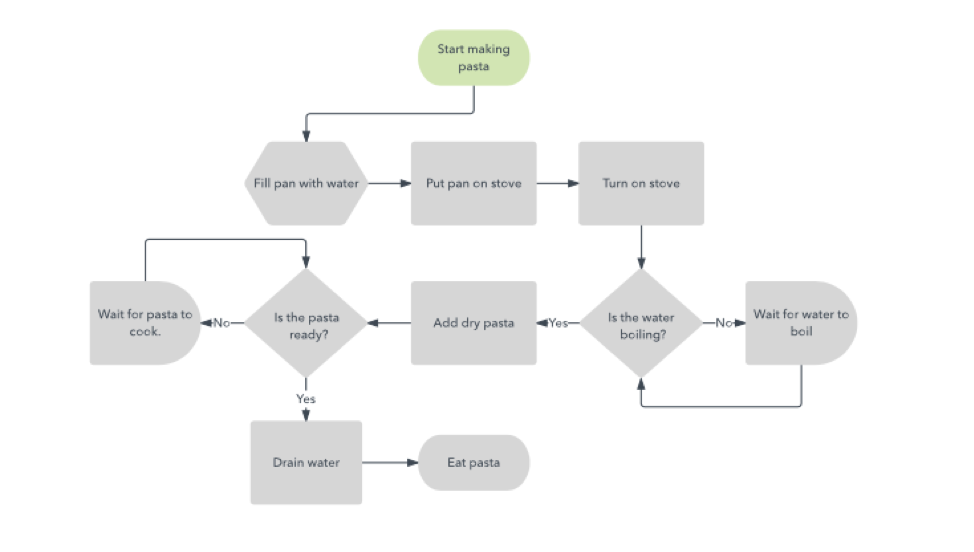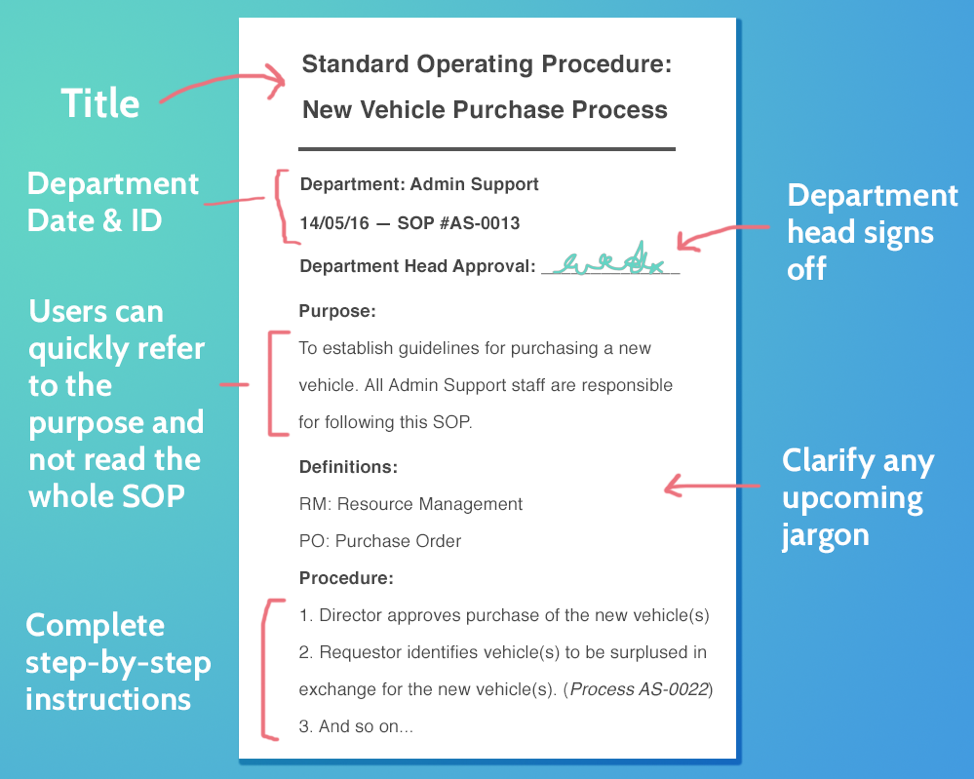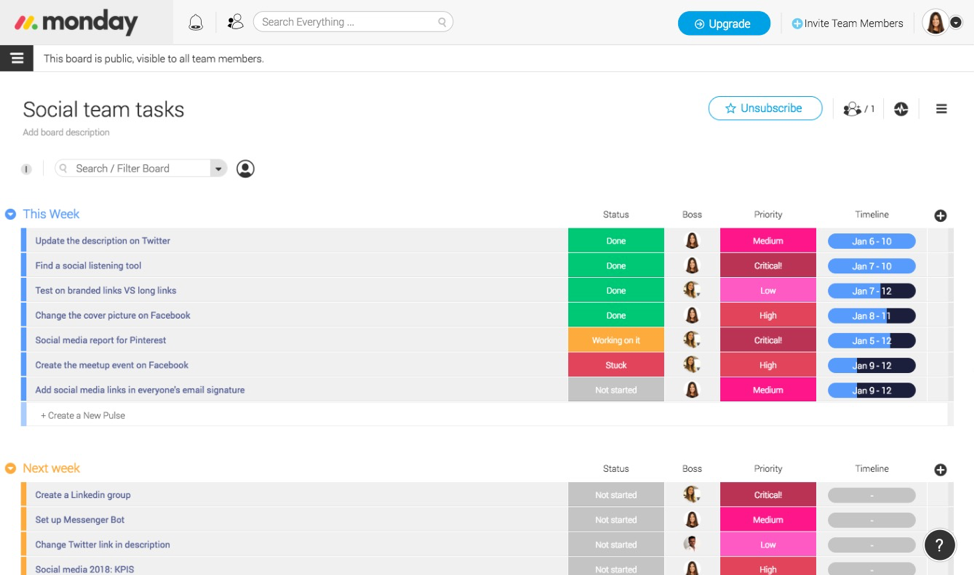Are you tired of fumbling your way through day-to-day tasks without a business process?
Do you wish you had some kind of plan in place for exactly how to carry out those tasks?
This is where business processes come into play.
If you can develop a business process for each of the recurring tasks in your business, this will save you a TON of time, money and frustration…and allow you to easily delegate these tasks to your team.
Following is a step-by-step strategy you can use to learn how to turn recurring tasks into a process…starting today.
How to Turn Recurring Tasks Into a Process
The goal of developing a business process is simply to have a predictable, step-by-step plan your team members can follow to complete recurring tasks.
There are many ways to approach this process. However, if you’re looking for a super-simple strategy, I’m going to show you exactly how to develop a business process…even if you’ve never done it before (or have never even wanted to do it before!).
1. Identify Your Frequently-Recurring Tasks.
Before you can create any business processes, you’ll need to identify all the recurring tasks in your business – or at least the ones you want to create processes for.
As I talk about in detail in my post on business systemization, identifying all the functional areas of your business is a good place to start.
To identify these key areas, think about all the different “departments” you have in your business. For instance:
- Human resources
- Finance and accounting
- Marketing
- Customer Service
- Operations
Then, for each of these areas, simply make a list of all the recurring tasks that fall under the purview of each “department”.
For instance, under “Finance”, you might have invoicing, bill payments and tax filing, and under “Marketing” you might have blog content creation and social media posting.
2. Use Process Mapping to Define Your Workflows.
Once you have a list of your recurring tasks, it’s time to use process mapping.
Process mapping is simply the act of documenting the step-by-step flow of a particular process.
Some other terms you may have heard for a process map are flowchart or workflow diagram.
Sample process map via LucidChart
To create your process map, you can use a tool you already have – like Word – or use an online tool like Lucidchart, Pipefy, or Creatly.
Either way, the goal is simply to list off every single step (no matter how seemingly small or insignificant) that needs to happen in carrying out the task.
3. Document Your Standard Operating Procedures.
Your process maps will come in really handy for this step.
Starting with the map you’ve created, dig deeper into each step. Be sure to document all aspects of each step, including:
- Who is responsible for each step
- When each step needs to take place
- Which tools or resources are needed for each step
Now write out a detailed list of instructions for each process, being sure to include all the info above.
This document is known as your standard operating procedures or SOPs.
Sample SOP via Process Street
While the example above may be overkill for a small business, hopefully, it gives you a good idea of a basic format you can use for your SOP!
4. Create a Task List for Each Team Member.
Finally, once you’ve got your SOP in place, you can create simple task lists for your team members.
This is basically just a document that specifies the tasks each team member is responsible for.
For each task, they will be able to consult the standard operating procedures document for detailed, step-by-step instructions.
If you want to take a low-tech approach, you can create a simple task list using Word or Excel.
And if you want to take things up a notch? Use a project management tool like Monday.com to list all your team members’ tasks in one centralized location.
This is the tool my team uses…and trust me, Monday.com will make your life SO much easier!
Final Thoughts
I trust this post has shown you how to turn recurring tasks into a process so that you can more easily delegate tasks to your team.
Looking for more help with systemizing your business or building your team? Check out these helpful posts:
10 Steps to Build a Team When You Have No Clue How to Get Started
How to Systemize Your Business to Grow and Scale in a Manageable but Profitable Way
Successfully Manage a Remote Team with These 10 Tips
I would love to know: Are you going to create business processes for your business? Are you going to use the strategy above? Let me know in the comments below!
About Author
Kim Garst
Kim Garst is a renowned marketing strategist and speaker who is trailblazing the use of artificial intelligence in digital marketing. With over 30 years of experience as an online entrepreneur, Kim helps entrepreneurs grow their business and authority online by using AI technology. She is leading the way with proven AI frameworks that help entrepreneurs build authority in their space.
She is keynote speaker and an international best-selling author of Will The Real You Please Stand Up, Show Up, Be Authentic and Prosper in Social Media.
Named by Forbes as a Top 10 Social Media Power Influencer, Kim is well-known for her skill to simplify complex technology and make the use of AI understandable for business growth. Her relatable, actionable advice helps guide new entrepreneurs to harness the power of AI to succeed in digital marketing. Kim is leading the way in combining human and technological skills to create a new model for AI-powered marketing.







2 thoughts on “How to Turn Repeating Tasks Into a Business Process that You Can Delegate to a Team”
What a nice and to the point blog post. A lot of people could learn from reading this post. Thanks for sharing.
A top article to read. Enormous and top blog post. Many people would learn a lot about the business process in detail from this. Thanks for sharing.